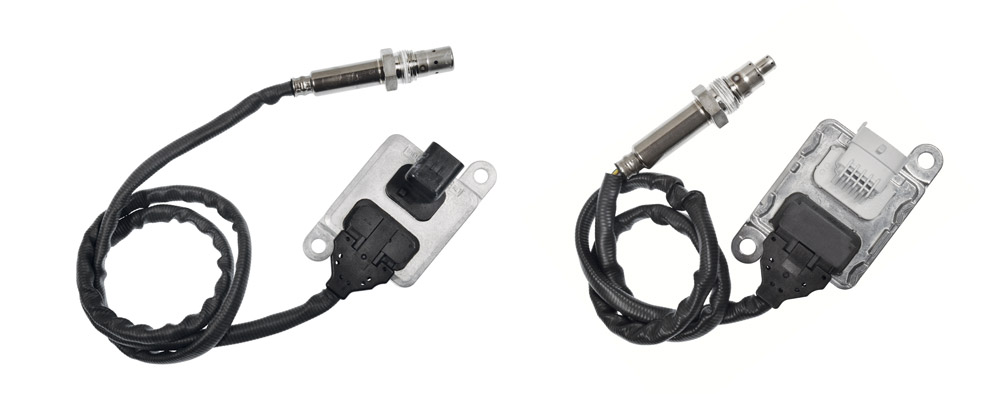
Diesel Nitrogen Oxide (NOx) Sensors

The Most Comprehensive NOx Sensor Program in the Aftermarket

A High-Failure Part That’s Required for Emissions Regulations
- NOx sensors monitor the level of nitrogen oxide being emitted by a diesel vehicle to ensure compliance with emissions regulations
- Common causes of failure include soot buildup on the sensor, ECU water intrusion, and/or damage to the cable, which will cause the check engine light to illuminate
About NOx Sensors
Below is a diagram of a generic Selective Catalytic Reduction (SCR) system used on light-duty diesel passenger trucks. The assembly uses two NOx sensors:

The SCR assembly contains a catalyst brick that requires DEF, or diesel exhaust fluid, for activation. A PCM controlled pump and doser valve are used to meter DEF into the exhaust system upstream of the SCR brick. With the exhaust heat, the DEF will decompose into ammonia and carbon dioxide.
If too much DEF is injected into the exhaust, the SCR brick can become saturated with ammonia and some of it will exit the SCR assembly. This is called “ammonia slip”. Ammonia and NOx look the same to a NOx sensor. Ammonia slip will cause the downstream NOx sensor to report an incorrect amount of NOx in the exhaust stream.
Is the NOx Sensor Reporting NOx Levels Correctly?
While addressing SCR codes concerning DEF quality, NOx sensor failure, or SCR efficiency, it may be necessary to “burn out” saturated SCR bricks and run the onboard diagnostic again. This can be accomplished by performing a manual DPF regen. The heat produced during the manual regen will remove ammonia from the SCR bricks and allow for a more accurate onboard SCR system diagnostic.
NOx Sensor Repair Tips
- A degraded doser valve (DEF injector) may set NOx DTCs
- Be sure to test the doser valve before replacing NOx sensors
- After replacing a NOx sensor, be sure to check service information for any reset procedures
- NOx sensors can’t tell the difference between NOx and ammonia
- Performing a DPF regen will release ammonia from the SCR catalyst
